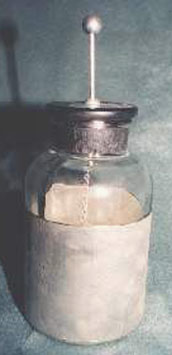Nollet Electrifies Royal Guard: Difference between revisions
From ETHW
No edit summary |
No edit summary |
||
| Line 1: | Line 1: | ||
'''This article is a stub. Please help expand the article by using the edit tab.''' [[Image:Leyden jar.jpg|thumb|center|Leyden Jar]] In April 1746, Abbé Nollet transmitted the charge of a [[Leyden jar|Leyden jar]] through a chain of 180 Royal Guards in Paris. Soon afterwards he performed a grander experiment at a Carthusian convent, making a 5,400-foot circle monks all give "a sudden spring" simultaneously. | '''This article is a stub. Please help expand the article by using the edit tab.''' [[Image:Leyden jar.jpg|thumb|center|Leyden Jar]] In April 1746, Abbé Nollet transmitted the charge of a [[Leyden jar|Leyden jar]] through a chain of 180 Royal Guards in Paris. Soon afterwards he performed a grander experiment at a Carthusian convent, making a 5,400-foot circle monks all give "a sudden spring" simultaneously. | ||
[[Category: | [[Category:Capacitors]] | ||
[[Category:Batteries]] | |||
Revision as of 17:24, 10 February 2012
This article is a stub. Please help expand the article by using the edit tab.
In April 1746, Abbé Nollet transmitted the charge of a Leyden jar through a chain of 180 Royal Guards in Paris. Soon afterwards he performed a grander experiment at a Carthusian convent, making a 5,400-foot circle monks all give "a sudden spring" simultaneously.
